We’re often asked about our cattle farm and how we raise our beef. We get it — people want to know where their food comes from! We love to talk about why and how we raise our grass fed beef (and grain-finished beef, too). In this post, we’ll talk about our cow-calf farm, how we raise our beef, and why we love doing what we do.
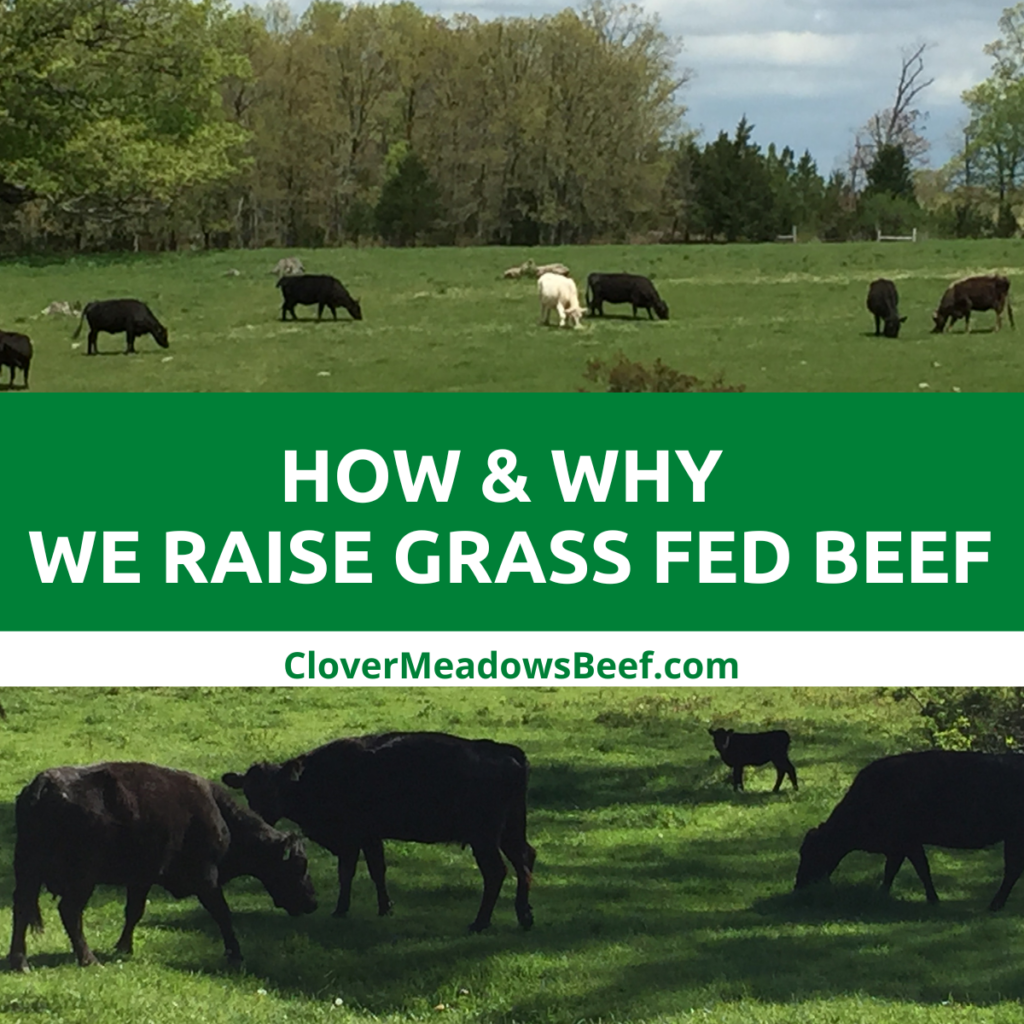
We’re often asked how we raise our grass fed beef. Our customers are interested in knowing if we buy our cattle, or if they are born and raised on the farm.
Our cattle are born and raised on our farm. That’s how we can tell you with certainty what they’ve eaten their entire lives and we know they’ve been treated with the utmost respect and love.
That’s the short answer. Now, let’s fill in the gaps and tell you the rest of the story about raising quality cows and calves.
All About Beef Production:
Cow-Calf Farm
We’re a cow-calf farm. That means we own a cow herd (cows are the mama cows) and then we sell the calves. This process is very common. The U.S. beef industry is primarily made-up of cow-calf operations and farmers generally own 10-100 cows. In Missouri, the average herd size is 27 mama cows. We’re 5th generation and have been doing this a long time, so as you’d probably expect, we have a very large herd.
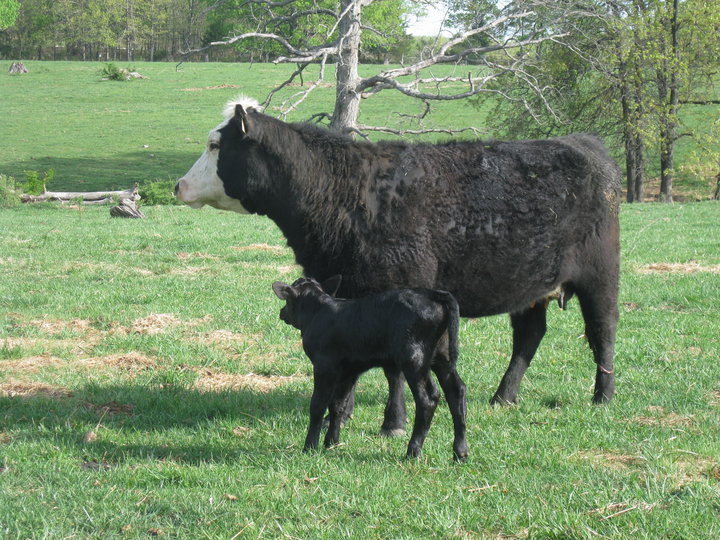
The key to any cow-calf operation is conception. Ideally, every cow has a calf every year and then you can sell the calf for income. Even though that’s the ideal, there are lots of variables.
Beef Production Stages for Beef Cattle
There are three main stages of a cow’s life:
- Cow-calf stage. As described above, this is what we do. Baby calves are born on our farm and they drink milk from their mothers until their stomachs are developed enough to eat grass.
- Backgrounding/Feeders stage. During this phase, cattle spend time eating grass and forage. Most cattle producers use mostly grass, but others use a combination of grass and grain to make the cow gain weight faster. Cattle are sold at the end of this phase when they’re around 10-14 months old and weight 700-900 lbs.
- Finishing stage. The finishing stage is when the animal gains its final weight before slaughter. All cattle spend the majority of their lives eating grass, but it can be finished in a variety of ways. This is why people talk about the difference between grass fed beef vs. grain finished beef comes in.
How Long to Go From Farm to Fork?
It takes about two to three years for cattle to go from our farm to your fork.
To give you an idea of the whole timeline, if we breed a cow in the Summer of 2020, it will give birth in the Spring of 2021. The calf will be weaned in the Fall of 2021, and then it eats grass and grows for 12-16 months. It will then be delivered to your door in the Winter of 2022.
As you can see, it’s a very long term process. It’s a total of almost 3 years from conception to a steak. This will help explain why we usually have a limited quantity of beef at Clover Meadows Beef. We’re guesstimating 12+ months out how much beef our customers will want to purchase the following year. 🙂
All About Beef Cattle:
The Cows (the Moms)
Cows are a lot like people in that they have a 9-month gestation period, and some cows get pregnant regularly and others not-so-often. A “good cow” is one that has a healthy calf every year, and weans a strong calf that is 500 lbs at 6 months of age.
We know when all of the calves on our farm will be born because we only let the bulls (the Dads) in the same fields with the cows (the Moms) at certain times of the year. This surprises many people, but we do this for the protection of the cow and calf. Usually, cows give birth outside in a field and no one is nearby when they have the calf. Now, think about the weather. If you’re a baby calf, you don’t want to be born when it’s freezing cold because you don’t know how to protect yourself yet. And if you’re a Mama cow, you don’t want to give birth on a hot 100+ degree summer day or it will be very hard on you. Spring and Fall are best for the Mom and baby, and that’s when we have our calves.
The Calves
The newborn calves that are female are called heifers, and the male newborns are called bull calves (go here if you want to learn more differences about cows, heifers, steers, etc). The calves stay with their moms for about 6 months, and then we wean them. Why do we wean him? There are a few reasons. First, at about 6 months of age, his mother no longer produces milk. Second, at the beginning of a calf’s life he needs his mother’s milk for nutrients. However, as he grows, he slowly starts to get more nutrients from the grass verses milk. At 6 months, the calf is about 500 lbs. His body is able to effectively convert grass to nutrients, and he will grow and gain muscle from the grass’s nutrients.
Once the calf is about 6 months, we start to make a decision to either sell them to a cattle sale barn, keep them for future Clover Meadows Beef cows, or keep them to be future breeding cows (the Mom cows) at our farm. Our best calves are hand-picked to be Clover Meadows Beef. These calves will spend the next 12 to 16 months on grass until they are around 1100 lbs. At that time, they’re ready to be processed in to the protein packed, lean grass fed Clover Meadows Beef that our customers know and love.
The Bulls (the Dads)
Now you know all about the Moms and calves, let’s talk about the Dads. Like many cow-calf operations, we buy our bulls from someone that specializes in bulls. Bulls have a very specific job and it comes around two times a year – when we let them in the field with the cows. One bull can breed about 25 cows. When they aren’t breading, they’re living the high-life and enjoying roaming fields, eating grass, and they don’t have any female cows telling them what to do!
There are tons of interesting facts about bulls (that we share here), but one of our favorites is that scientific studies have shown that the bull will follow a cow in heat for about 10-miles. This is their “dating” process. One of the ways a bull can tell if the cow is ready to be bred is by the smell of her urine (yep, it’s sort of like a woman’s fertility test).
We could raise our own bulls on the farm (after all, some of the calves born on are farm are male), but we choose not to. The reason for this is because if we did, it’s entirely possible that as time progresses a bull could end up breeding with his cousin, aunt or sister. That’s not good!
Also, 65% of the genetic makeup of a calf comes from the bull, not the cow. Therefore, if we want a calf that has leaner meat, we will let a leaner bull be in the field with those cows.
All About Raising Beef Cattle:
Grass Fed Beef Cattle’s Food and How They’re Raised
The goal of our farm is to do all we can to make sure the cows are happy, eating well and producing. Our cows graze on our land throughout the Spring, Summer and Fall. During the Spring and Summer, we also cut some of this grass and make hay bales so that we can feed them grass (i.e. hay) in the winter.
One of the many things that makes cows such an amazing creature is that they have a ruminant stomach, which means it can get nutrients from plant-based food and there are 4 parts to their stomachs. They eat the grass the first time, and then they regurgitate it in their mouth three more times until they’ve gotten all of the nutrients out of the grass. It sounds sort of gross and there is a lot more science to if you want more details, but that’s the basics of it.
Now, think about your dog and what happens if he eats grass. He would likely throw it up in a prominent spot of your kitchen floor, and when you clean it up you would see blades of grass in the mess. That’s because he has a monogastric (1-part) stomach, not a ruminant (4-part) stomach. A dog can’t get any nutrients from grass. Cows are one of the few animals God put on this earth to eat grass.
What do cows eat?
What do cows eat? Mostly grass. Grass is an amazing substance, too. Depending on the soil and the time of year, grass is full of protein and other minerals that a cow needs. However, the quality of grass can change. For example, in years that there is less rain, the quality of the grass goes down. When that happens, we sometimes have to give the cows mineral supplements so that they still have whatever nutrients they’re not getting from the grass. It’s sort of like a person taking a multi-vitamin to make up for whatever nutrients they’re not getting from their daily diet.
Why We Raise Grass Fed Beef
As you can see, raising quality cows and calves is a lot of hard work. It is not something you can just jump into. It takes years of blood, sweat and tears to get it right. In addition to that self-determination, you have to have good land and grass that can support the cows, years of experience, and a willingness to live with uncertainty year-round. We’re constantly asking ourselves questions like — how much will it rain this year, will a cow get pregnant, and how will the younger calves do in the winter?
So why do we do it?
We love it!
One more thing!
Do you want to learn more about beef? Below are a few popular beef posts and recipes you may like. In addition, we have an entire ebook about beef that goes through purchasing and preparing beef from a farmers perspective.
- What is Grass Fed Beef?
- Farm Life: How We Feed Cows
- What’s the Difference Between a Steer vs Bull? Cow vs Heifer?
- 27 Amazing Facts About Cows That Will Impress Your Friends
- Do Cows Have Teeth?
- Buying a Cow. How Much Beef Is It?
Don’t Forget!
We have a weekly e-newsletter where we share about farm happenings, beef recipes, and when our next beef will be available to order. When you sign up, you’ll get a cheat sheet with 9-must-ask questions before buying beef directly from a farmer.
Pin it for Later!
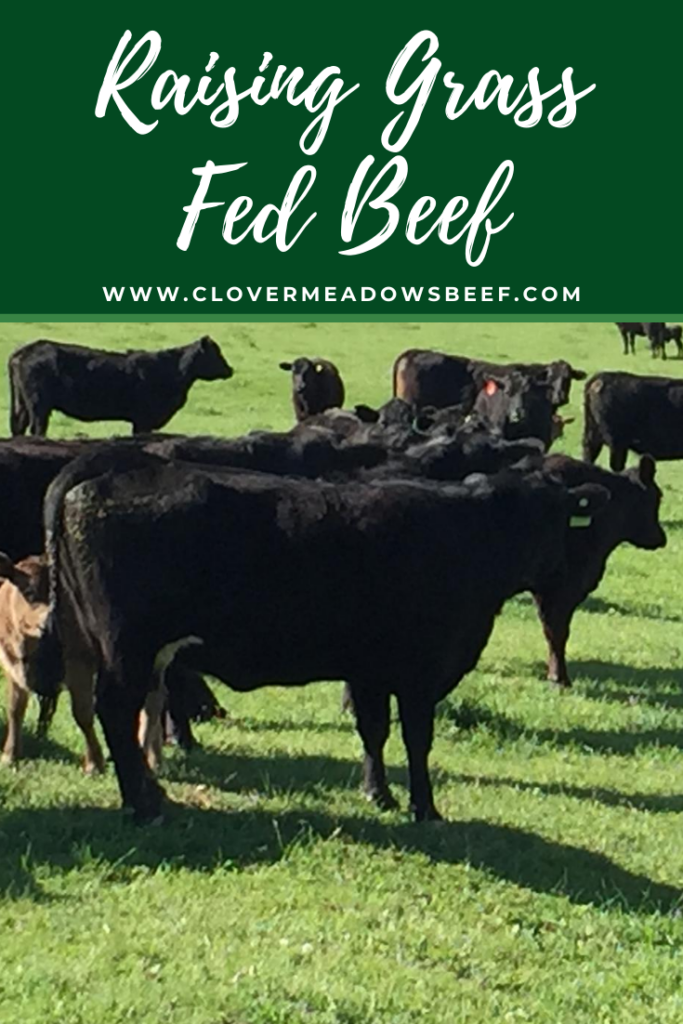
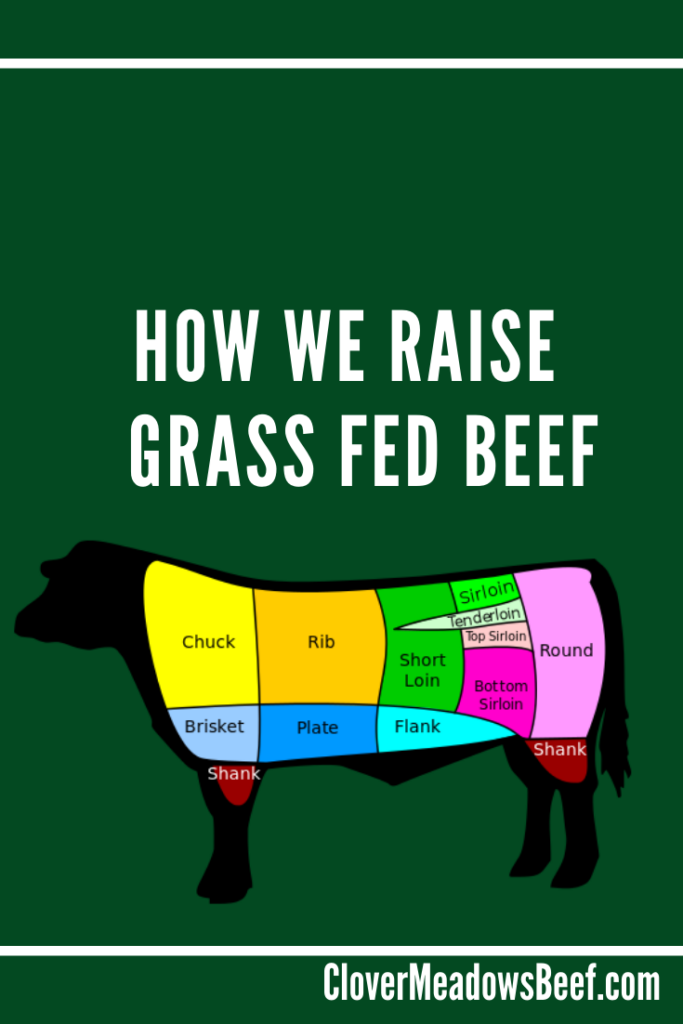



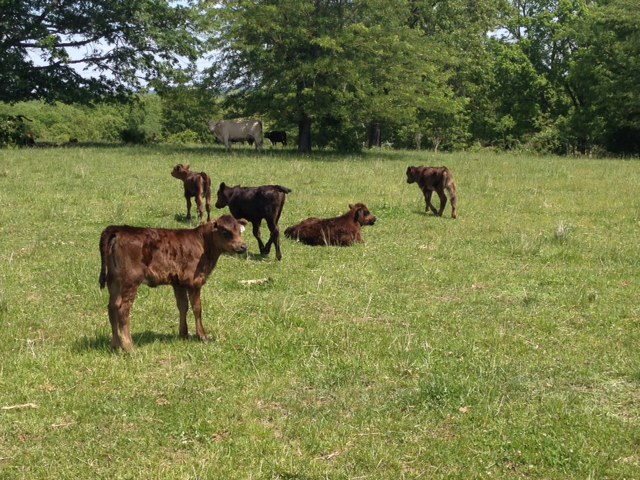
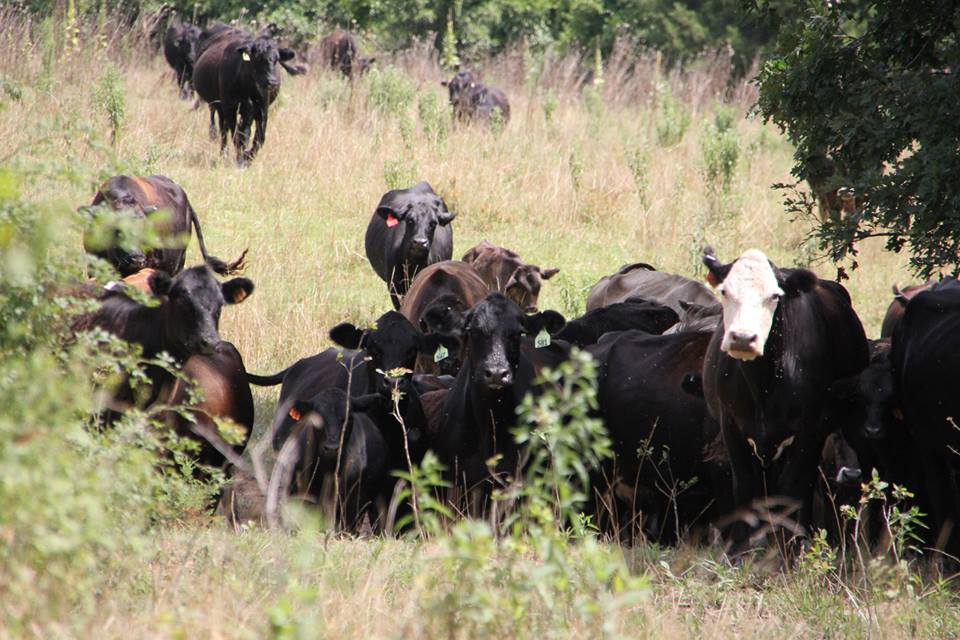
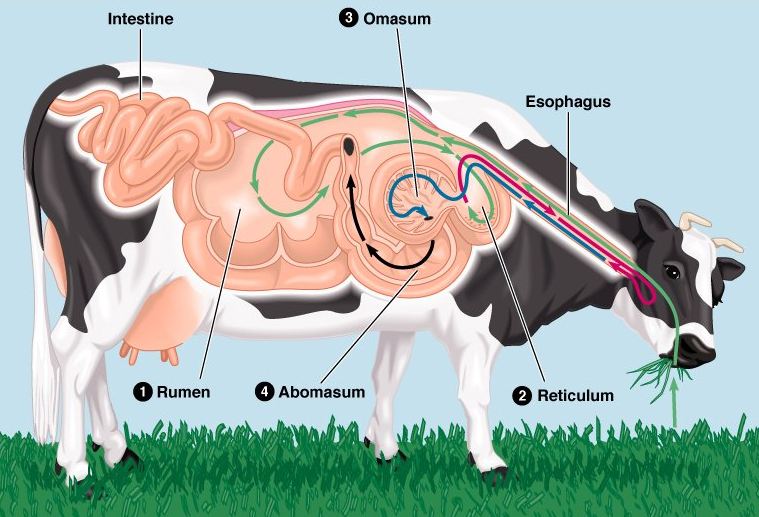
Thank you for your article. We have beef cattle and they are so happy and their babies are beautiful I’m looking into grass fed beef. Well I guess I want my calves to go to a grass fed home not a nasty feed lot. I cant tell or select my buyers but is there farms out there that will purchase calves to be kept on grass?
I read a lot of interesting articles here. Probably you
spend a lot of time writing, i know how to save you a lot of work, there is
an online tool that creates unique, SEO friendly articles in minutes, just search in google –
laranitas free content source